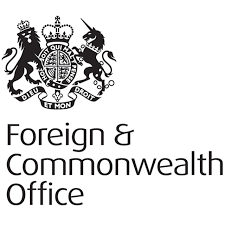PRESS RELEASE : Government emissions slashed to deliver millions to public purse [April 2023]
The press release issued by the Cabinet Office on 21 April 2023.
The annual State of the Estate report has been published.
- Overall emissions from the government down 35% since 2017
- £122 million saved through reductions in energy consumption of government buildings
A major efficiency drive has seen emissions from the government fall by 35% in less than five years.
New figures, released today in the government’s annual State of the Estate Report, show that overall emissions from the government have fallen by 35% compared to 2017-18 levels, with emissions from buildings down by 10%.
The fall in energy consumption is estimated to have saved the taxpayer £122 million.
Other efficiency savings released today include:
- Water consumption is down by 10% compared to 2017-18, saving the taxpayer £7.2 million
- Departments sent fewer than 1% of waste to landfill in 2021-22, easily surpassing the target of 5%. Overall 92% of waste within government is recycled, exceeding the 70% target
- Government has reduced its paper consumption by 61%
Cabinet Office Minister Alex Burghart said:
We want to make government more efficient in all areas, and today’s report shows that the public estate is playing its part.
We are greening our estate more and have reduced carbon emissions by 35% as we head towards net zero by 2050.
The government has committed to halve carbon emissions from the public sector by 2032, with a 75% reduction target by 2037. Today’s ‘State of the Estate 2021-2022’ report shows the government is on course to meet that target with overall emissions down 35% since 2017, and emissions from government buildings by 10%.
For example, the new Birmingham Government Hub is saving more than £2 million per year for the taxpayer by consolidating staff from 21 departments under one roof. Its location promotes green travel through local public transport networks and is designed to be accessible, inclusive, and sustainable while providing a range of places for different uses.
Figures in the report also reveal over £600 million in sales receipts for the taxpayer from government property – such as offices and NHS buildings – sold in the last 12 months, reducing the number of expensive London office spaces which are no longer needed, such as Custom House in the City of London and Windsor House in Westminster.
This is in addition to savings of £2bn which will be achieved over the next three years through the Government Property Strategy.
Disposals of sites are only considered after their potential use for wider public objectives, such as supporting local services, have been fully considered.
Since the programme was launched in 2018, the number of core buildings in Central London have reduced from 67 to 43, or by around a third.
While reducing the size of its estate, the government is also driving an agenda to make the civil service less London-centric. A number of Government Hubs have already opened or are under development, with civil servants from different departments co-locating outside central London.
To date, more than 11,000 government roles have been relocated out of London and across the UK under the Places for Growth programme. The north-west has seen the most roles created, with around 2,100 jobs previously based in London now operating from cities such as Manchester and Liverpool, generating millions in economic benefits to local areas.



